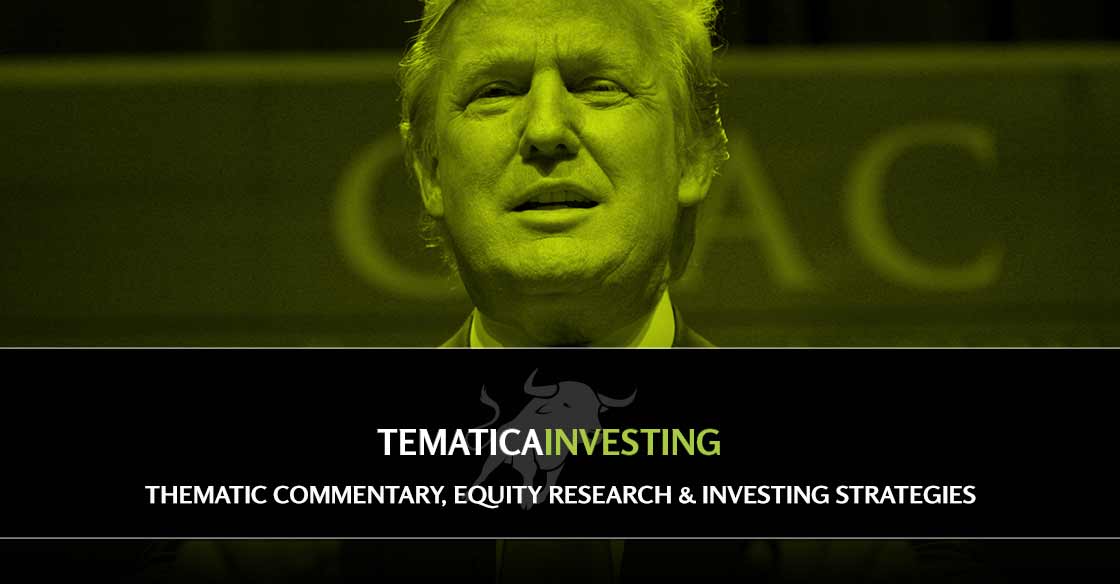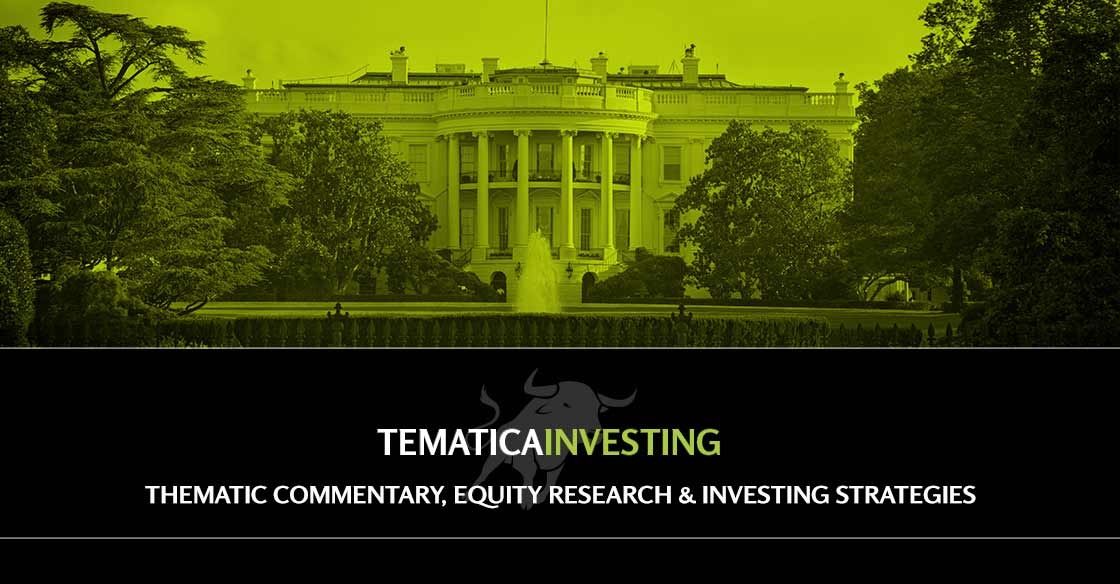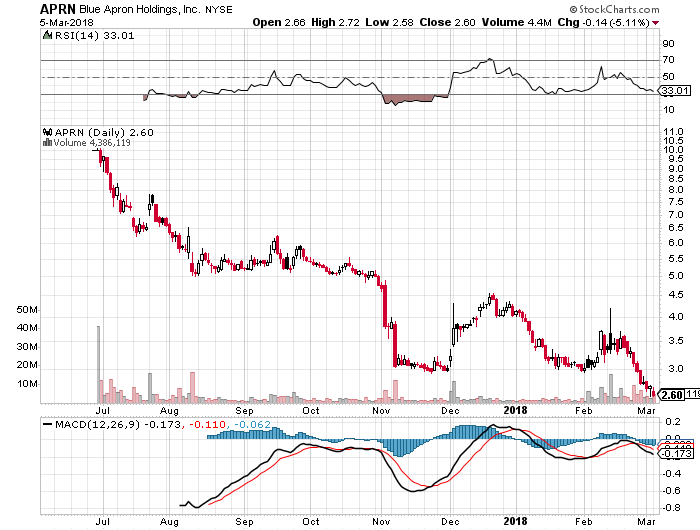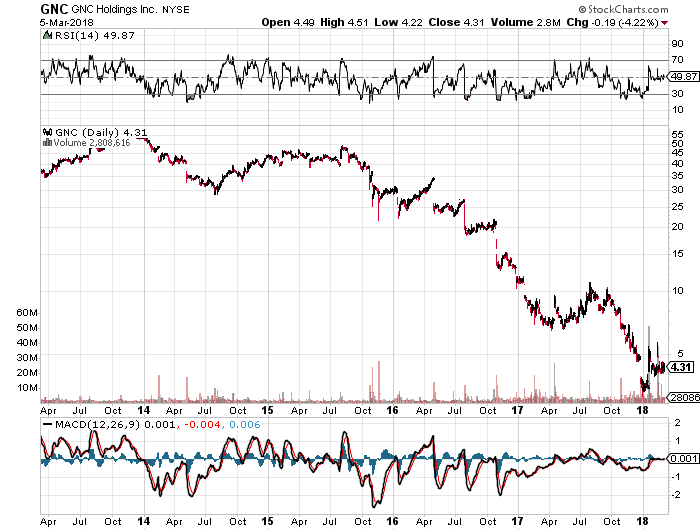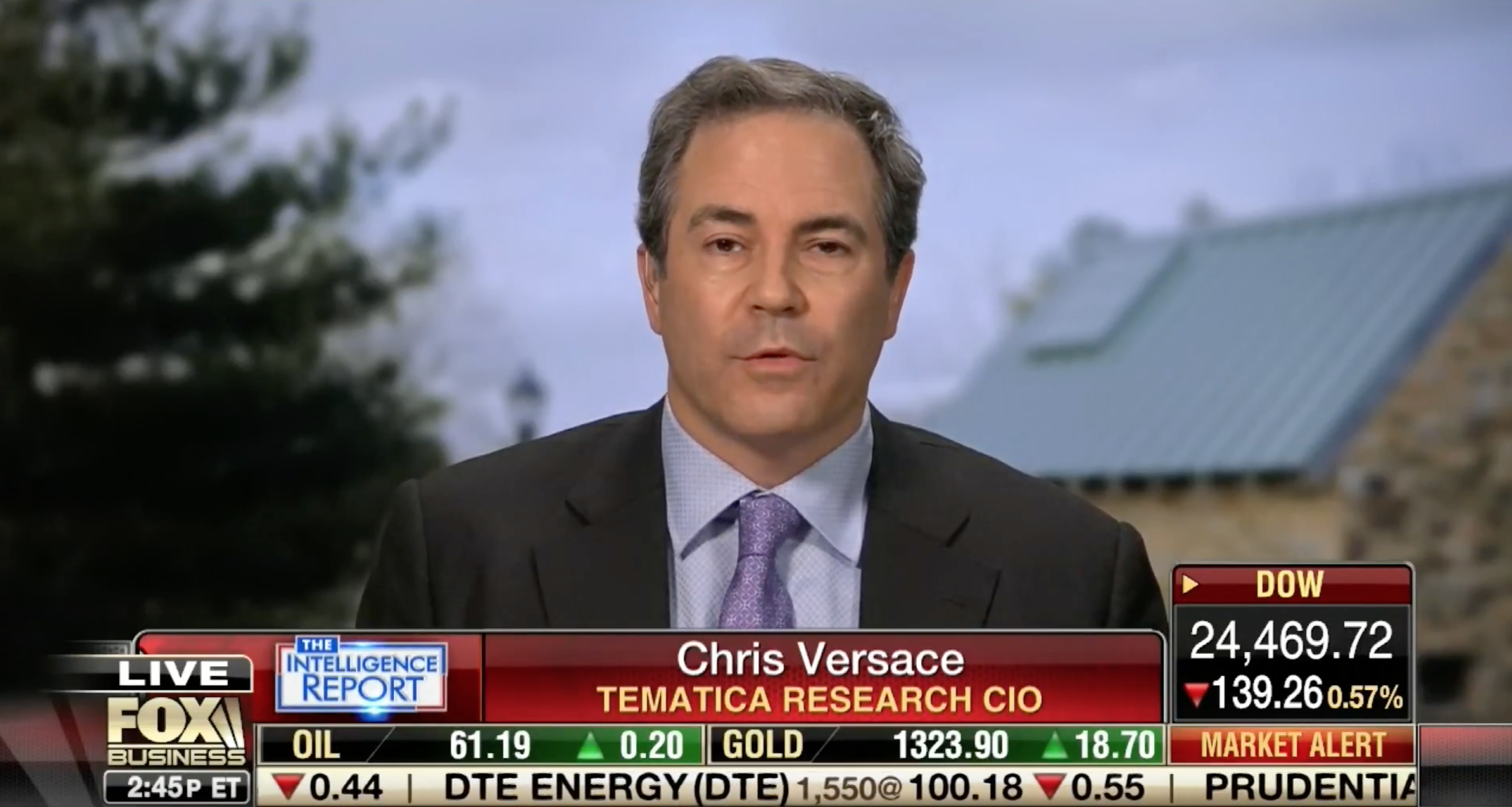Later today we will close the books on February 2018 and thus the first two months of the year as well. As we here at Tematica have recounted across our various writings here at Tematica Investing, the Weekly Wrap and the Monday Morning Kickoff as well as our Cocktail Investing Podcast, we’ve seen quite a change in sentiment over the last several weeks as the conversation over the speed of the economy, the tone of inflation and what the Fed may do has taken center stage.
Over the weekend, legendary investor Warren Buffett once again offered some sage advice in his annual letter to Berkshire Hathaway (BRK.A) shareholders. Among the annual learnings offered up from the “Oracle of Omaha”, Buffett talked about the outperformance to be had by being an investor as opposed to a trader and thinking of investments as “interests in businesses, not as ticker symbols.” I could not agree more, but then again that speaks to how I use Tematica’s investment themes to identify well-positioned companies. When it comes to Buffett, he’s not exactly bad company to be lumped into.
In the same shareholder letter, we see how this investing style has led Buffett to outperform the S&P 500 over the long-term. While I would not be so bold to say we are in that same camp, I think we can all agree that we’ve seen the outsized returns that are possible when investing from a thematic perspective. In the coming review of the Tematica Investing Select List, I’ll highlight some of those returns as well as share some of my current thoughts on its holdings.
Rather than inundate you with pages and pages of updates here today, I’m splitting the overall update into two parts. Those companies that don’t appear in today’s issue, such as Amazon (AMZN), Apple (AAPL) and a few others, will be covered in the next weekly edition of Tematica Investing… here we go
Applied Materials (AMAT) Disruptive Technologies
Since being added to the Select List, just about a year ago, AMAT shares have risen 60% in that time — one of the strongest performers on the Select List. Both its business and share price have benefitted from the rising demand for chips, which has led to the current upcycle in spending on semiconductor capital equipment. While many of the talking heads are bemoaning slower growth prospects for the smartphone market, the devices continue to pack more functionality and storage inside their packages, and this is before 5G.
Voice recognition technology and greater processing power to handle that, as well as augmented reality and virtual reality, are all leading to greater chip dollar content in these devices despite slower unit growth. Per Applied, average semiconductor content per smartphone rose 30% in 2017. To use the investing lingo, we are seeing rising average dollar content per device that is poised to step up again in 2019-2020 as those aforementioned 5G chips make their way into smartphones.
We’re also hearing quite a bit about the growing voice assistant market as Apple (AAPL) launches its Home Pod and Amazon (AMZN) touted 2017 was a banner year for its Alexa powered devices. What’s not really talked about, however, is the typical voice assistant has around 30 chips and a total of 200 square millimeters of silicon, roughly twice the area of a smartphone application processor.
Now let’s think about not only the new types of voice assistants we are seeing from Amazon with video screens, but how these digital assistants are being embedded in other devices ranging from TVs to a road map that includes home appliances and autos. All of these digital assistants are connected back to servers like Amazon Web Services and the artificial intelligence workloads require server architectures that have up to eight times more logic and four times more memory content by area than traditional enterprise servers.
The bottom line is the Internet of Things, big data, augmented reality, artificial intelligence, data centers and storage are driving incremental chip demand. This tailwind has led Applied to raise its wafer spending forecast among its customer base to $100 billion over 2018-2019, up from $90 billion in 2017-2018. One of the wild cards for potential upside to that forecast is China, which continues to add domestic capacity, which is benefitting Applied given its leading market share position in the region.
All the while Applied’s Display business continues to benefit from larger format TVs as well as the ramp in organic light emitting diode display capacity. These drivers have led Applied to forecast more than 30% growth at its Display business in 2018, which follows nearly 60% growth in 2017. As if that wasn’t enough, Applied recently upsized its quarterly dividend to $0.20 per share from $0.10, and increased its stock buyback programs by adding another $6 billion on top of the remaining $2.8 billion under its existing authorization. All in all, this makes for a compelling case when it comes to owning AMAT shares.
- Our price target on AMAT remains $70.
Costco Wholesale (COST) Cash-Strapped Consumer
The decision to first add and then scale into COST share between last June and September has certainly paid off as the shares are up more than 19% on a consolidated basis. With each monthly same-store sales report, Costco shows it continues to thwart not only Amazon, but its business continues to garner consumer wallet share, outperforming grocery and other retailers in the process. The long and short of it is I see Costco thriving as consumers look to stretch their increasingly under-pressure disposable income, while other bricks-and-mortar retailers struggle.
We will look to assess the impact of tax reform on the Costco’s business and what that means for EPS estimates and our price target when Costco next reports its quarterly results on Mar. 7. I also expect the company to share offer a rich update on its e-commerce initiatives as well as its roadmap for new warehouse openings in 2018. As a reminder, the membership fee revenue stream is extremely profitable for Costco.
- Our Price target on COST remains $200.
ETFMG Prime Cyber Security ETF (HACK) Safety & Security
It’s been almost a year since we added shares in this cybersecurity-focused ETF to the Select List and they are up just shy of 20%. With cyber-attacks becoming the next theater of warfare in the 21stcentury, I continue to favor the diverse approach to be had with holding HACK shares over owning just one or two cyber security companies. If you missed the overview on our Safety & Security investment theme published in a recent cyber security special report published by The Washington Times, you can find it here.
- With cyber threats poised to continue in 2018 and beyond, and the Internet of Things offering a target rich environment, I am boosting my HACK price target to $40 from $35.
LSI Industries (LYTS) Economic Acceleration/Deceleration
Since adding shares of this non-residential construction-related company to the Select List this past September, the shares have climbed more than 21%, even after yesterday’s post Powell market sell off. While we wait for more on President Trump’s rebuilding U.S. infrastructure framework to trickle out, the next known catalyst for LYTS shares will be the January Construction Spending report from the Census Bureau that will be published later this week. Looking at the Architectural Billings Index (ABI), Architecture firms started 2018 on a positive note as AIA’s index rose to 54.7, its highest January score since 2007. I see the ABI as a leading indicator of building activity and view the uptick as very positive for LYTS.
- My price target on LYTS remains $11.
On a side note, for those wondering why we’ve held off bringing DY shares back onto the Select List, you have no further to look than the December and January New Home Sales figures that fell roughly 7.5% each due to the impact of winter weather. As we put the impact of that weather behind us, including having it factored into Dycom’s quarterly results and its share price, we’ll revisit this soft circled stock.
McCormick & Co. (MKC) Rise & Fall of the Middle Class
I remain upbeat on MKC shares, despite no new developments in recent weeks following the favorable data found in the January Retail Sales Report. That data showed food-and-beverage retail sales at grocery stores climbing 4.5% year over year vs. falling same-store sales and traffic in January reported by the National Restaurant Association. While McCormick is heading into its seasonally slow time of year, I remain bullish as consumers look for healthier eating alternatives without sacrificing flavor. This week I’ll be looking to incorporate comments from food and restaurants from Dean Foods (DF), B&G Foods (BGS), Papa John’s (PAPA), Habit Restaurants (HABT) and others as well as the coming economic data into my McCormick tapestry.
- Thus far in 2018, MKC shares are up some 5%, and as we soon enter the spring eating season I’ll look to review my current $110 price target.
MGM Resorts (MGM) Guilty Pleasure
Following a good quarterly report, an upbeat outlook offered by the management team and a 9% hike in the quarterly dividend, shares of this gaming-and- hospitality have moved modestly higher during what is a seasonally slow time of year for the gaming industry. On the earnings call, management shared that it is expects a “strong year” based on the trends it is seeing in both Las Vegas and Macau quarter to date due partly to the recent opening of MGM Macau Cotai as well as the separation this year between the Super Bowl and Chinese New Year. Bolstering that outlook, MGM has a rich line-up of entertainment over the coming months that should draw people to its hotels, restaurants and of course its casinos. For us, we’ll look for confirmation in the monthly gaming data to be had.
- My price target for MGM shares sits at $39.
Nokia (NOK) Asset-Lite
As the conversation surrounding 5G mobile network deployments has heated up, our shares of Nokia have climbed more than 25% thus far in 2018. That move has brought our overall position in Nokia shares well into the black. This week in particular, 5G is a focal point of the Mobile World Congress 2018 conference and we’ve already learned that T-Mobile USA (TMUS) will build out 5G coverage in 30 cities this year while Spring (S) shared the first five cities for its 5G network that will arrive in 2019.
I see the higher margin Nokia Technologies being well positioned to expand its licensing customer base as 5G networks move mobile connectivity beyond today’s smartphone-centric market into the connected home, connected car, wearables, and the industrial internet — in other words, the Internet of Things. In addition to Mobile World Congress this week, we’ll also be listening to specialty contractor Dycom’s (DY) earnings call for incremental details on the 5G network buildout from its customer base that includes AT&T (T) and Verizon Wireless (VZ).
- My NOK price target remains $8.50.
Paccar (PCAR) Economic Acceleration/Deceleration
We recently added shares of this heavy-duty and medium-duty truck manufacturer to capitalize on the growing pain point of rising freight costs due to a national truck shortage at a time when the domestic economy is on firmer footing. I’d also note this truck shortage comes amid that secular shift toward digital shopping, which in my view is not going to slow down and will likely exacerbate the shortage in the near-term.
My thesis on PCAR was recently supported by favorable commentary on the heavy-duty truck market from Daimler AG, a competitor to Paccar. ACT Research currently forecasts U.S. Class 8 (heavy-duty truck) retail sales to be 247,000 units in 2018, up from just under 200,000 in 2017, and solid growth in medium-duty trucks as well. Our $85 price target equates to just under 16x estimated 2018 EPS. In terms of signposts for this Buy-rated position, I’ll be watching monthly heavy-duty truck data as well as tonnage stats and manufacturing industrial production numbers.
- My price target on PCAR shares remains $85.
Rockwell Automation (ROK) Tooling & Re-Tooling
Early this month we added shares of Rockwell Automation (ROK) to the Tematica Investing Select List as part of our Tooling & Re-tooling investment theme with a $235 price target. Rockwell is a leader in industrial automation and information products that serve a wide variety of industries ranging from automotive, textiles, food & beverage, infrastructure, personal care, oil & gas, and life sciences to power generation, semiconductor and other industries.
This earnings season we’ve started to hear from companies, like Boeing (BA) that are boosting capital spending plans and investing in product development as well as its factories. Based on these prospects as well as statistics for private fixed assets that reveal the average age of US factory stock is near 60 years old, the Association For Manufacturing Technology forecast U.S. orders of manufacturing equipment to rise 12% in 2018 up from an annual rate of 9% it forecasted this past November. Given the tax code changes that for the next five years allow companies to immediately deduct the entire cost of equipment purchases compared to writing off only a portion of the cost in a single year, odds are this upgrade and expansion spending will span more than just 2018.
- My price target remains $235.
United Parcel Service (UPS) Connected Society
When we added UPS shares to the Select List just over a year ago, my view was they were a “second derivative” play on the accelerating of digital shopping. Over the last year, we have seen continued gains in that shift due in part to Amazon branching out into new categories (apparel, lingerie, furniture, and X to name a few), but also as other retailers, like Walmart (WMT), have looked to position themselves where customers.
We see no slowdown in that shift, and while we continue to hear chatter over Amazon developing its own truck fleet, given the size and scope of its network, it will be a long time and quite a capital expense to scratch the surface of that network. If they do, it will be a positive for our PCAR shares. On the housekeeping front with UPS, we sold half the position in early January netting a 22% return.
- My long-term price target for UPS shares remains $130.
Universal Display (OLED) Disruptive Technologies
Yesterday, we used the sharp pullback in OLED shares to add to our position given our view that we are still in the very early innings of this technology being adopted across a growing number of applications.
- Our price target remains $225, which keeps OLED shares a Buy.
Of course, there were some exits . . .
Also, during the first two months of the year, we were stopped out of both AXT Inc. (AXTI) and USA Technologies (USAT) shares which generated returns of roughly 27% and 66%, respectively. Not too shabby, but all the more impressive when we consider both were added last April, so bear in mind those returns were generated over the span of 9-10 months and handily beat the return had by the major market indices over the respective time frames. Another proof point that thematic investing trumps sector investing… as if we needed yet another reminder.



